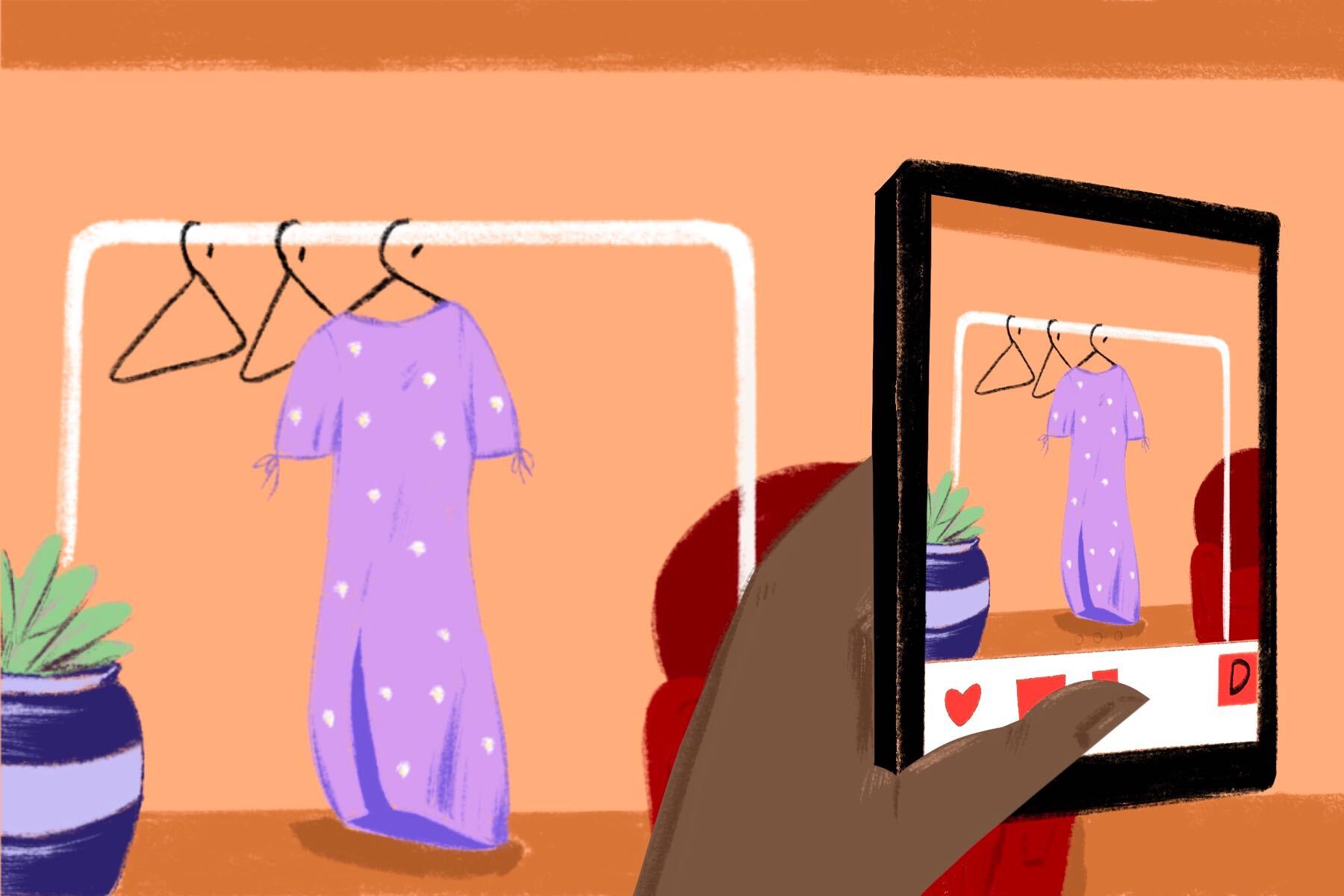A trendy mix between Instagram and eBay, Depop is a UK-based social shopping app that allows sellers to create profiles and sell items right from their bedroom. I originally joined because I had too many clothes I needed to get rid of, and not enough money to buy more. But in the past few years, Depop has grown to be more than just a way to clean out your closet and make a bit of money on the side. With its emphasis on sustainability, Depop is a legitimate outlet for artists to manage online shops that express their personal fashion tastes while simultaneously rejecting the current unsustainable fast-fashion industry.
Online resale culture has been around for ages; eBay the granddaddy of online resale, was originally launched in 1995 and has retained popularity since. Buying used items was once looked down upon, but as climate change becomes a more pressing issue, people are more open to reducing their consumption and waste.
The popularity of thrifting and resale shopping has grown in recent years, especially among the younger generation, and the stigma against buying and wearing secondhand items has decreased significantly. Depop is one of many clothing resale websites, along with The RealReal, Poshmark and ThredUp, that popped up in the early 2010s.
TheRealReal identifies itself as “Authenticated Luxury Consignment,” reselling brands like Gucci, Givenchy and Chanel, and markets itself to more affluent, middle-class adults. ThredUp, although similar to Depop, brands itself as “the world’s largest thrift store,” which leaves little room for creativity; this is unlike Depop, where sellers can curate their own shops. Depop is unique in its Instagram-like format that’s geared toward the younger generations.
Nearly 90% of Depop’s users are under the age of 26, reflecting the shift in youth identity toward sustainability and rejecting flawed systems like the fashion industry. With young people like Greta Thunberg calling on lawmakers to take action against climate change, Generation Z is making political and social activism trendy.
In September 2019, the youth-led Global Climate Strike took place worldwide in big cities like Melbourne, Nairobi, New York City, London and Berlin, with young people holding up signs like “There’s no Planet B.” As Generation Z becomes more aware of their environmental impact on the world, many turn to thrifting and online resale as alternatives to fast fashion. Currently, the fashion industry is responsible for 10% of global greenhouse gas emissions and 20% of global wastewater. The United States alone throws out 25 million pounds of clothing per year into landfills. Depop allows individuals to take part in breaking these statistics, as the app depends on the popularity of sustainability and thrifting culture to create a platform for young people to redesign what fashion means to them.
Depop not only represents a shift in youth culture toward environmental awareness, but also a change in how the new generation sees the fashion industry. Depop’s format reflects Generation Z’s sense of individualism that influencer culture has made popular.
Brands are no longer setting the aesthetic standard; individuals with their own tailored tastes are selling looks by associating them with their own persona. This shift is seen in the way brands are marketing their products through influencers who give personal testimonies to how great a product is. With Depop’s peer-to-peer commerce platform where sellers and shoppers can interact and mingle, selling becomes a personal experience.
Depop gives creators a platform to market their own aesthetic beyond the conformity of fast fashion. With seller profiles mimicking those of Instagram celebrities, sellers have the freedom to artistically curate their items and content feed to their liking, without tailoring it to mainstream fashion. Depop CEO Maria Raga tells Forbes that a big part of Depop’s appeal is how the pieces being sold on the app are original and of limited quantity. It gives shoppers a “one-of-a-kind” feeling, a rejection of the conformity that fast fashion represents.
Many of the most popular Depop sellers who use their online shops as their main source of income often use this platform as a countercultural statement to sell not only their clothes, but also their artistic vision of what fashion means to them. They are selling something thrifted that used to be seen as dirty or cheap and rebranding it with a vintage, distinctive artistic appeal.
Surprisingly, the demand for these thrifted, secondhand, one-of-a-kind pieces is pretty high. Recently, Bella McFadden, username @iGirl, became the first Depop seller to make 1 million euros, which is the equivalent to 1.26 million U.S. dollars. She also has an Instagram where she uploads aesthetic fashion posts.
Other top Depop sellers, such as @spookyworld, @isabel_hendrix and @aloeverica were interviewed by Teen Vogue to talk about their artistic vision for redefining both fashion and beauty. They all have their perspectives on the rocky relationship between fashion and sustainability, but all ultimately believe that their shops diverge from the conformist, boring and environmentally harmful fast-fashion markets.
Erica Barrios — known as @aloeverica — said that Depop has given small creators the power to “broaden the scope of what is attractive and get creative with that.” Depop is becoming a powerful countercultural platform for small artists to challenge big players in the fashion industry; they are reimagining the modern fashion designer. Anyone with a love for thrifting, an eye for aesthetics and a basic business sense can find success as a Depop seller.
I, myself, have a Depop shop, @catluo27, where I make some cash on the side by cleaning out my closet every month or so. Because of Depop, I have found a productive, lucrative and creative outlet for my shopping habits. At my shop, my most popular items are my painted jeans; I thrift vintage jeans and revamp them by painting original designs on them. Some of my favorites were my white jeans with the hands of God and Adam painted on each leg. I’ve also sold my old prom dresses and jewelry I no longer wear.
Depop has not only pushed me to think critically about fast fashion’s impact on the environment, but it also inspired me to channel my creative energy into something that I could morally support. I no longer shop at fast fashion stores, and on my monthly thrift hauls, I keep an eye out for clothes that I feel like I could restyle and give a second chance. When it feels like I’ve gotten my wear out of those items, I post them onto my Depop and give them another home.
As Depop seller @Alm0ndmilf puts it: “Depop is a safe space for originality and a way to directly support self-made businesses that don’t contribute to climate change because most Depop sellers are selling vintage whether it be reworked by the seller or giving new life to a piece of clothing that was rotting away in a thrift store.”
Depop marks a cultural shift in America’s youth culture that aims to break the barriers of fashion and emphasizes the fact that individuals have the power to control where our clothes come from.

















